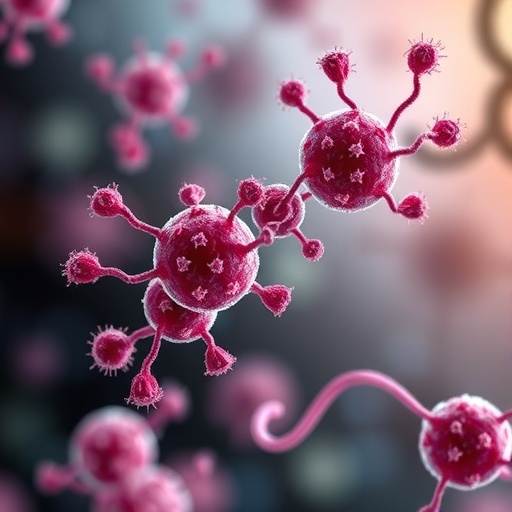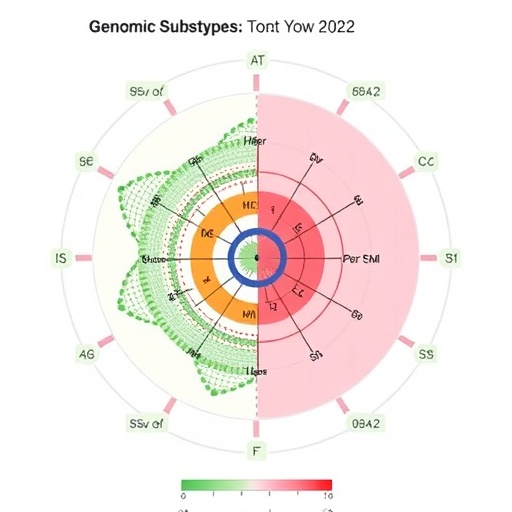In the intricate web of cellular machinery, certain proteins operate as indispensable architects, orchestrating the fundamental processes that maintain life. Among these, VAMP proteins have emerged as pivotal players, commanding attention not only for their essential role in cellular vesicle trafficking but also for their expanding influence in disease pathogenesis and therapeutic innovation. Recent comprehensive studies illuminate the multifaceted functions of VAMPs, uncovering their critical involvement across an array of physiological systems and pathological states, positioning them at the forefront of molecular medicine.
Vesicle-associated membrane proteins (VAMPs) are an integral subset of the SNARE (Soluble NSF Attachment Protein Receptor) family, instrumental in mediating membrane fusion events that govern intracellular trafficking. These proteins facilitate the precise delivery of cargo—including neurotransmitters, hormones, and enzymes—by driving fusion between transport vesicles and target membranes. This highly regulated process is essential for maintaining cellular homeostasis and communication, underscoring VAMPs’ indispensable role in cellular physiology.
Delving into the molecular architecture of VAMPs reveals an evolutionarily conserved structure that empowers their function. Each VAMP protein possesses a characteristic SNARE motif responsible for forming the SNARE complex, a four-helix bundle that drives vesicle fusion. This structural motif enables VAMPs to interact synergistically with syntaxin and SNAP-25 counterparts on target membranes. The formation of this trans-SNARE complex generates the mechanical force necessary to overcome energy barriers between lipid bilayers, effectuating membrane merger. Intriguingly, diverse VAMP isoforms are adapted to specific cellular contexts, reflecting an exquisite specialization in vesicle trafficking pathways.
.adsslot_iWFGQmtdP7{ width:728px !important; height:90px !important; }
@media (max-width:1199px) { .adsslot_iWFGQmtdP7{ width:468px !important; height:60px !important; } }
@media (max-width:767px) { .adsslot_iWFGQmtdP7{ width:320px !important; height:50px !important; } }
ADVERTISEMENT
The involvement of VAMP proteins extends beyond physiological vesicle transport into the realm of disease states, where aberrations in their expression or function contribute to pathogenesis. Neurodegenerative disorders, such as Alzheimer’s and Parkinson’s disease, have been intimately linked with dysfunctional VAMP-dependent synaptic vesicle fusion, disrupting neurotransmission and accelerating neuronal death. In cancer biology, emerging evidence implicates certain VAMP isoforms in tumor progression by modulating secretion of enzymes and growth factors that remodel the tumor microenvironment, facilitating invasion and metastasis.
Recent advances in high-resolution imaging and molecular biology have propelled our understanding of VAMP functionality. Cryo-electron microscopy studies have unveiled dynamic conformational transitions within the SNARE complex assembly, providing unprecedented insight into the temporal regulation of membrane fusion cascades orchestrated by VAMPs. Complementary single-molecule analyses further elucidate the kinetics of SNARE complex formation and disassembly, offering promising avenues to design targeted interventions that fine-tune VAMP-mediated fusion events.
Therapeutic innovation harnessing VAMP proteins is rapidly gaining momentum, driven by the critical insights into their molecular mechanisms. Small-molecule modulators and peptide inhibitors designed to disrupt or stabilize SNARE complex interactions have demonstrated potential in preclinical models to restore vesicular trafficking imbalances implicated in neurodegenerative and metabolic diseases. The specificity of VAMP isoforms expressed in distinct tissues presents the tantalizing possibility of precision therapeutics with minimized off-target effects.
Gene therapy approaches aimed at correcting mutations or modulating the expression of VAMPs offer another promising therapeutic strategy. Viral vectors engineered to deliver functional VAMP genes or RNA interference constructs targeting pathogenic VAMP variants are under active investigation. The intersection of gene editing technologies, such as CRISPR/Cas9, with VAMP biology opens the door to durable treatments for inherited disorders rooted in vesicle trafficking defects.
The complexity of VAMP function is further highlighted by their regulatory networks involving phosphorylation, ubiquitination, and interaction with accessory proteins. These post-translational modifications dynamically tune VAMP activity in response to cellular cues, thereby integrating vesicle fusion with broader signaling pathways. Deciphering these regulatory layers is imperative to fully exploit VAMPs as therapeutic targets and to anticipate compensatory mechanisms that may undermine treatment efficacy.
Moreover, VAMP proteins are implicated in immune system modulation, influencing the secretion of cytokines and the antigen presentation process. Immune cells rely heavily on precise vesicle fusion events for communication and response coordination, wherein VAMPs serve a critical role. Dysregulation of VAMP-mediated pathways in immune cells has been associated with autoimmune diseases and chronic inflammation, elucidating new directions for immunomodulatory therapies.
The biomarker potential of VAMP proteins is a burgeoning area of research. Altered expression profiles of VAMP isoforms in patient-derived tissues and biofluids portend their utility as diagnostic and prognostic indicators across cancer, neurodegeneration, and infectious diseases. Quantitative assays and imaging modalities targeting VAMPs could enhance early detection and therapeutic monitoring, thereby personalizing clinical interventions.
Interdisciplinary research integrating biophysics, structural biology, and systems biology is imperative to map the comprehensive interactome of VAMP proteins. Robust computational modeling coupled with experimental validation promises to unravel the spatial-temporal dynamics of VAMP-mediated fusion, illuminating how dysregulation manifest at the cellular and organismal levels to drive disease.
The emerging narrative of VAMP proteins’ role in cellular and disease biology epitomizes a paradigm shift, transforming our approach from viewing them as mere components of vesicle trafficking to recognizing them as central molecular architects influencing health and disease. This recognition fuels relentless scientific inquiry aimed at converting fundamental discoveries into tangible clinical applications.
In summary, VAMP proteins serve as critical nodal points in the cellular machinery, integrating vesicle trafficking with diverse signaling and regulatory networks. Their involvement in numerous pathological conditions and therapeutic modalities underscores their significance in modern biomedical research. As the molecular blueprint of VAMP function unfolds, it empowers the design of innovative interventions capable of addressing some of the most pressing medical challenges of our time.
Subject of Research:
VAMP proteins and their roles in disease pathogenesis and therapeutic innovation.
Article Title:
VAMP proteins: molecular architects in disease pathogenesis and therapeutic innovation.
Article References:
Yu, D., Zhang, H., Ding, X. et al. VAMP proteins: molecular architects in disease pathogenesis and therapeutic innovation. Med Oncol 42, 411 (2025). https://doi.org/10.1007/s12032-025-02969-x
Image Credits: AI Generated
Tags: evolution of VAMP protein structureintracellular vesicle trafficking processesmembrane fusion events in cellsmolecular mechanisms of VAMP proteinsroles of vesicle-associated membrane proteinsSNARE protein family functionssynaptic transmission and VAMPstherapeutic targets in molecular medicineVAMP proteins and neurotransmitter releaseVAMP proteins in disease therapyVAMP proteins in pathogenesisVAMPs in cellular communication





